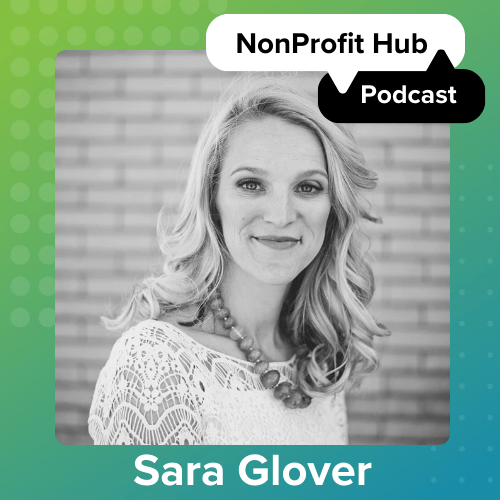Marketers are constantly striving to understand the habits of their target audience. What are your habits? What do you like? What do you believe? What influences your decisions? Why do you drive 15 minutes out of your way to shop at one grocery store over another?
Nonprofit organizations are often in the same boat as they look to engage new audiences and motivate them to action. What inspires you? What do you connect with? What makes you share a message or visual? What pushes you to donate your time, or champion a cause?
Much has been written about millennials and how to reach this key demographic. But Gen Z — those born after 1995 — actually outnumbers Millennials and Baby Boomers, capturing 25 percent of the population. Although their power may be limited as adolescents and young teens, their habits will become increasingly important as they enter the workforce and explore their ability to make an impact on the world around them.
If your nonprofit is looking to connect with Gen Z, there are quite a few differences that must be understood. Here are three tips for connecting with this younger generation.
1. When you’re up against an 8-second attention span, visuals matter.
New statistics on attention spans made a big splash last summer, with the average attention span lasting just 8.25 seconds — almost a full second less than the focus of a goldfish.
Gen Z personifies this to a T. Whereas Millennials introduced a challenge for organizations seeking their attention by using up to three screens at a time, Gen Z is using up to five. Rather than watching your ad, they’re clicking into another tab, opening an app on their smartphone, or scrolling through a tablet while they wait.
For Gen Z, the focus on visual impact begins at the first interaction, when a teen struggles with your mobile website or notices your Instagram profile picture is cropped oddly.
It also extends to your overall aesthetic and the visuals you choose for marketing a specific campaign.
Here’s an example: Our agency recently led a campaign for a nonprofit community health center seeking to improve inquiries and appointments for its family planning services. Although the health center brand is friendly and approachable, we knew the pastel, muted colors and “ghost people” icons of their primary marketing pieces weren’t going to connect with a target audience of 15- to 25-year-olds. After all, would you as a teenager want to seek advice on contraceptives from the same brand your mom trusts?
Instead, we took a visual approach focused on bright, neon shapes and bold visuals. High-impact, high-contrast color and design engaged younger audiences right away even in their noisy social media timelines.
2. If visuals matter, authentic content matters more.
Gen Z has grown up in the digital age. They are extremely savvy when it comes to technology, social media and promoted or branded content. They can see through your marketing speak and any clunky attempts at pandering instead of creating relevant content.
Instead, they want authenticity. In fact, 63% of Gen Z say they prefer to see real people than celebs in their ads. Realistic narratives and stories they can connect to will outperform a nonprofit trying to be something it’s not.
Part of this authenticity is how your nonprofit lives its values — an organization that claims to support a cause like fighting against climate change, but offers its CEO a private jet for cross-country speaking engagements, for example.
But part of it also shows up in everyday marketing messages, where the voice of the consumer reigns king.
In the same family planning campaign I referenced above, our challenge was to create a broad approach to connect with both sexes and a range of ages and experiences — many of whom would have very diverse definitions of family planning services, and all of whom expected authentic content.
We chose to connect emotionally by voicing some of the questions our target audiences were likely to have: Should I use condoms? Do I have an STI? Should I be tested for HIV? What’s a Pap exam? The most prominent bubble has an overarching question, “What’s right for me?”
We understood the voice of the consumer and dug deep into fears and uncertainties. Reproductive health is confusing and often unfamiliar to teens and even young adults. Information from friends can be conflicting, and asking a doctor can feel embarrassing.
Our call-to-action provided a solution that empowered the reader without talking down to her or him: “Get the facts. Make a plan.”
3. Content must reach Gen Z where they are. (Hint: Social media.)
For members of this new generation, it’s totally normal to be 100 percent connected at all times—to friends, to family, to the world.
A recent online study of high school and college students found that 88 percent use Instagram, and 76 percent of users access the platform daily. Snapchat saw similar results, with 88 percent on the platform and 78 percent accessing their accounts daily. In fact, more than half noted they open Snapchat more than 11 times a day.
That’s not to say Facebook is old news: 81 percent use Facebook, and 66 percent use Facebook daily.
It’s not enough to take a digital approach to reaching younger consumers: Knowing Gen Z’s habits on multiple screens, it’s imperative to be open to several social media networks.
In our family planning campaign, we didn’t want to ignore teens who might’ve already been coming into the health center, but we focused primarily on our digital efforts. The good news is, a digital approach can often be more cost-effective than traditional marketing.
Leveraging a $1,000 advertising budget, we ran sponsored posts on Facebook and Instagram, reaching nearly 100,000 individuals within our target geographic region and age group. Not surprisingly, we saw much higher engagement among our young audience on Instagram, with overall numbers of nearly 2,500 Likes and Comments on Instagram, and Reactions, Likes and Shares on Facebook.
Connecting with Gen Z might not feel like second nature yet, but by focusing attention on these three specific areas, nonprofit organizations can uncover fresh and engaging methods that fit their goals and budget.
–––––––––––
Sarah Chain is an account director with Gavin™, a digitally minded public relations and marketing agency based in York and Harrisburg, Pennsylvania. She specializes in health care, education and nonprofit clients, and brings nearly a decade of experience in writing and social media. Follow her on Twitter at @sarahechain.






